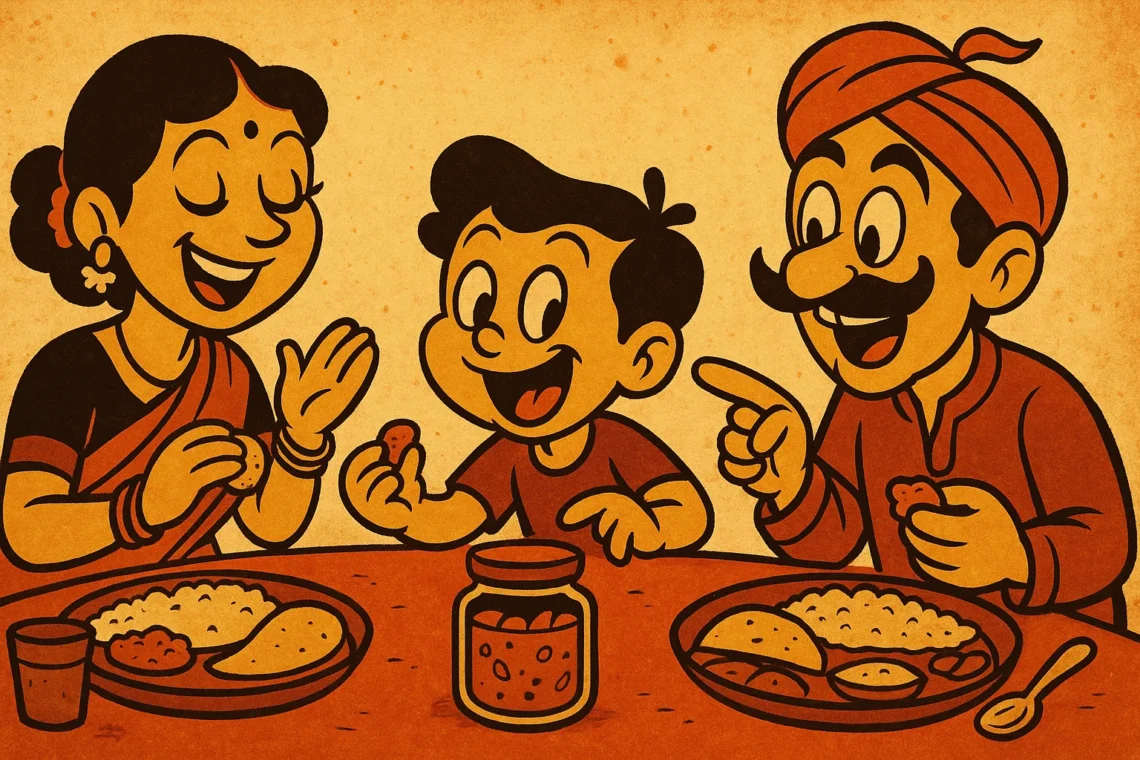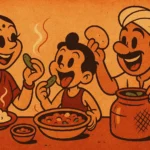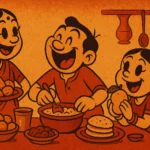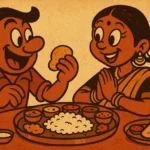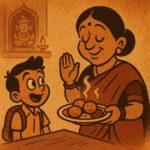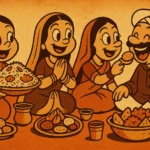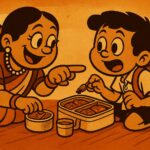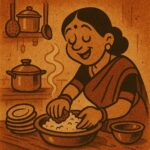You can serve the softest rotis, the fluffiest rice, the most lovingly spiced sabzi — but in many Indian homes, the real drama doesn’t unfold until someone asks: “Which pickle?” And just like that, the meal pivots from quiet satisfaction to a full-fledged discussion involving loyalty, spice tolerance, family allegiances, and occasionally, threats to make your own if you don’t like what’s on the table.
Pickle isn’t just a side in Indian meals. It’s a conversation starter. A cultural compass. A condiment with a personality disorder — it’s sweet, sour, salty, spicy, and sometimes all of the above in one bite. And choosing the right one isn’t just about taste. It’s about identity. Mealtime, especially in multi-generational homes, often features a predictable arc: the food is served, everyone praises the sabzi, someone asks for pickle, and boom — the great achar debate begins.
The Lineage of Preference
In our house, it was mango vs. lime. My father was staunchly Team Mango — the Andhra-style, fiery, oil-slicked kind that stained your fingers and left your sinuses slightly terrified. My grandmother swore by her lime pickle — dark, caramelized, bitter-sour-sweet from being aged in the sun for weeks. My mother was the peacekeeper, who offered both but always made a point of saying, “Your nani’s version was different.” That one sentence could derail the meal into a nostalgic spiral of “Remember her ginger garlic one?” and “She never used store-bought, not like these days.”
The Jar That Divides and Unites
Every family has the one jar everyone claims to hate but still reaches for. In our case, it was the red chili thokku — pure fire, with a hint of tamarind. Too spicy, everyone said. And yet, it always ran out first. Pickles are like that. They don’t wait for approval. They barge into your mouth, hijack the flavor profile of an otherwise mild meal, and leave you wanting more, even as you reach for the water.
And then there’s the question of oil: “Too much oil,” someone complains, lifting the spoon carefully to avoid drips. “That’s how it stays preserved!” another retorts. Or the salt: “This batch is too salty.” “Pickles are supposed to be salty!” It’s an endless loop of debate that never resolves, but no one stops eating.
Regional Passports on a Spoon
Pickles are where regional pride truly comes out. North Indian households defend their aam ka achar with fennel and kalonji. Tamilians cling to maavadu — tiny mangoes pickled whole. Gujaratis prefer their sweet chhundo, while Kashmiris have their special walnut achar that most outsiders have never even tasted. Every jar is a story, every spoonful a time machine.
Once, a cousin brought a bottle of homemade gongura pickle from Hyderabad. A sharp, leafy, sour revelation. Within minutes, alliances shifted. Debates flared. “This is better than the mango one,” someone dared to say. A hush fell over the table. You could hear the crunch of papad. My father, loyal to his mango, didn’t comment. But I noticed he reached for the gongura during second helpings.
The Store-Bought Standoff
Then there’s the issue of sourcing. Homemade is ideal, obviously. Bonus points if sun-cured on the terrace. But someone always sneaks in a store-bought bottle. And while everyone insists it’s not the same, it’s always finished. “This one tastes like soap,” someone says, dipping in again. “Next time I’ll make it myself,” someone promises. They never do. But the jar stays in the fridge, half-empty, quietly mediating the weekday meals.
Not Just a Side — a Signal
The pickle you reach for says more than you think. Feeling brave? You go for the garlic one, raw and unapologetic. Feeling tender? Lime in syrup, mellow and forgiving. Feeling like fighting with your sibling? Claim the last spoon of their favorite. Watch the war unfold.
And when guests come over, the pickle choices expand. Out come the jars that are normally rationed. “This is from my aunt in Madurai,” someone says proudly. “Careful — it’s spicy.” Everyone nods, but secretly takes extra. Because pickle is also a flex. A gift. A challenge.
The Debate That Binds
So yes, every meal begins with the mains. But it comes alive with the pickle. The arguments aren’t annoying — they’re tradition. They’re proof that food is still worth having opinions about. And that no matter how simple the meal, a dollop of something sharp, sour, and deeply divisive can turn it into a full experience.
Because in Indian homes, mealtime isn’t complete with just dal, sabzi, and roti. It needs tension. It needs laughter. It needs someone yelling, “Who finished the mango achar?”
Only then is the meal truly served.
Born in Mumbai, now stir-frying feelings in Texas. Writes about food, memory, and the messy magic in between — mostly to stay hungry, sometimes just to stay sane.

